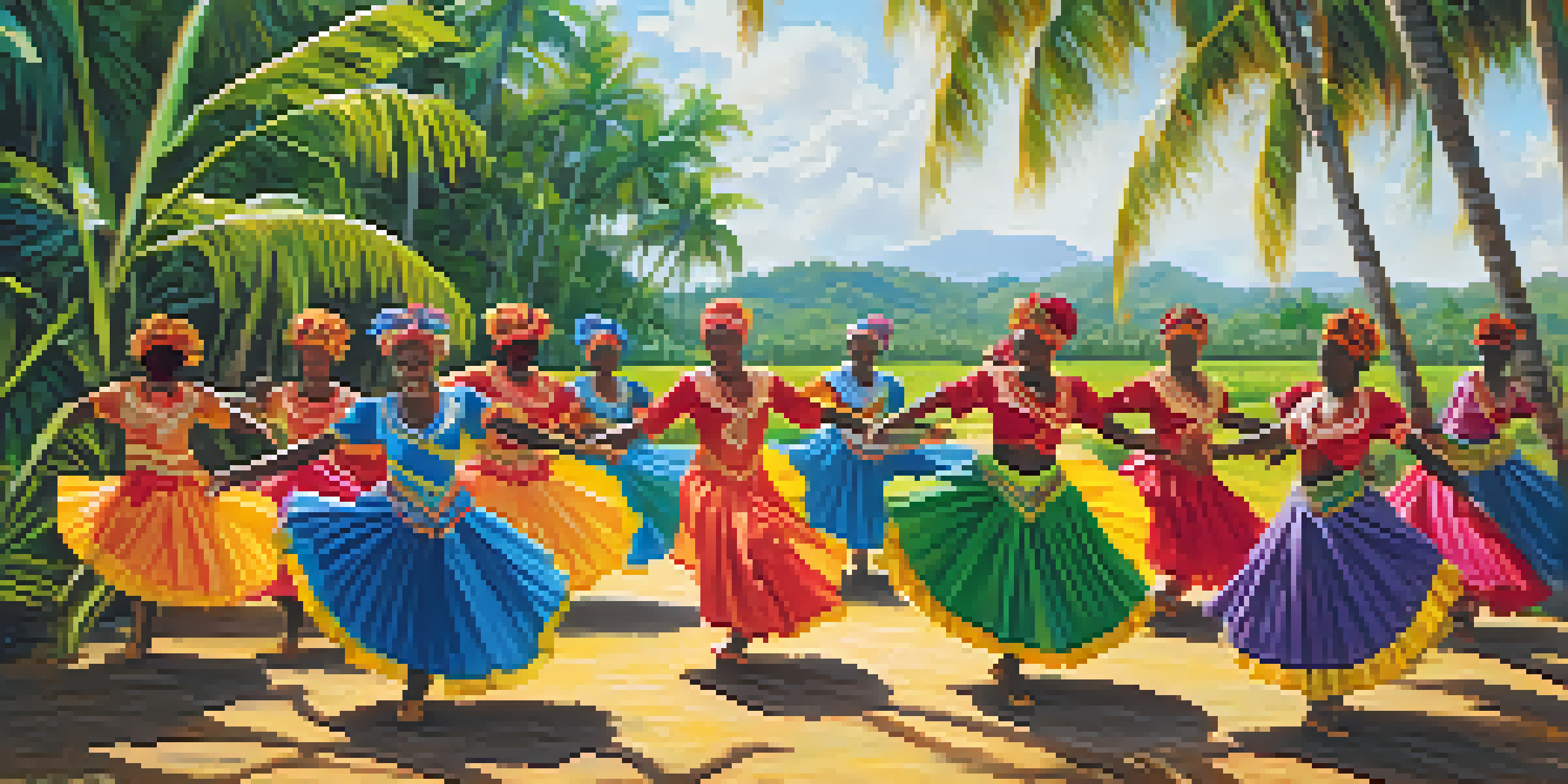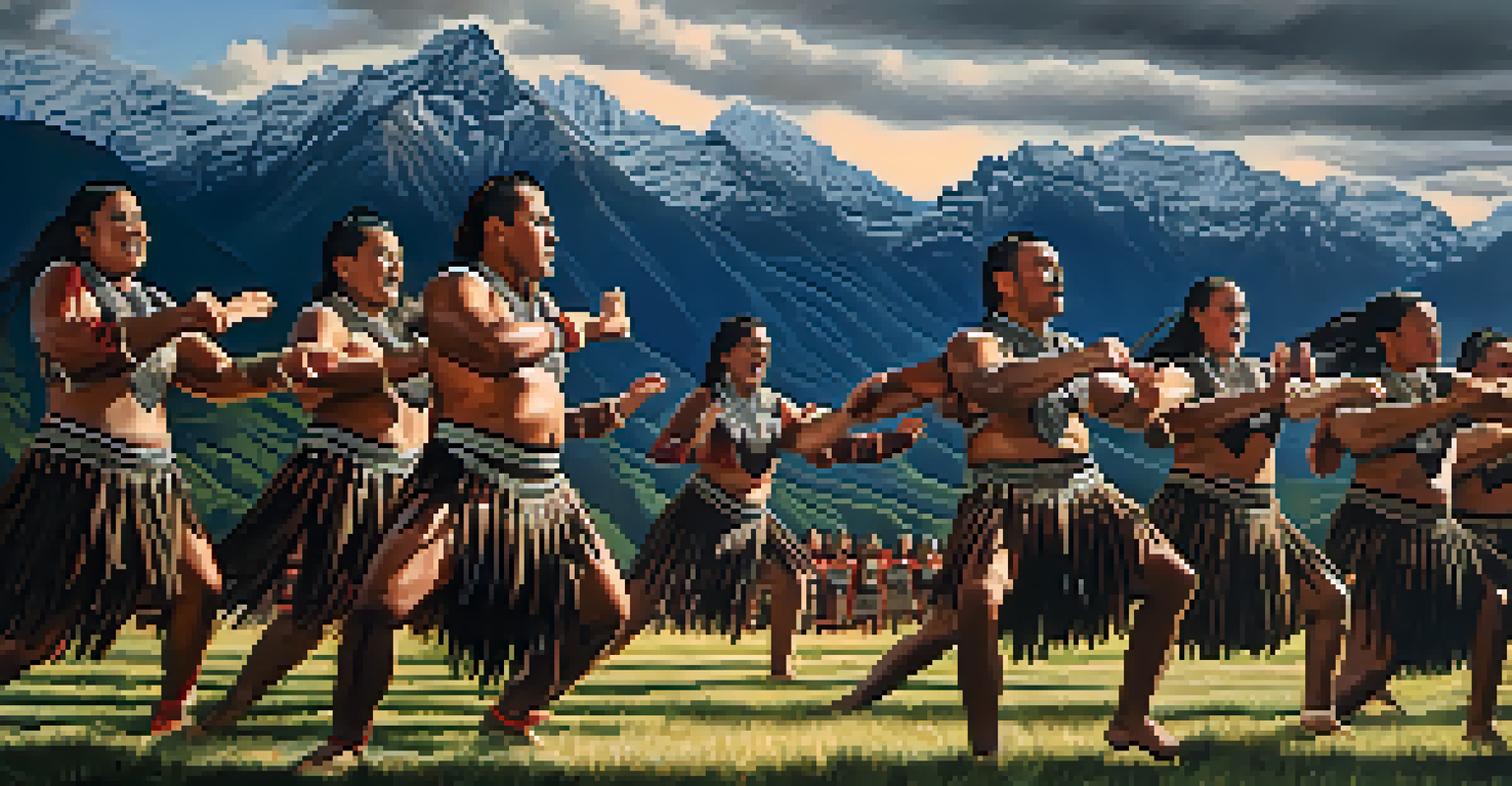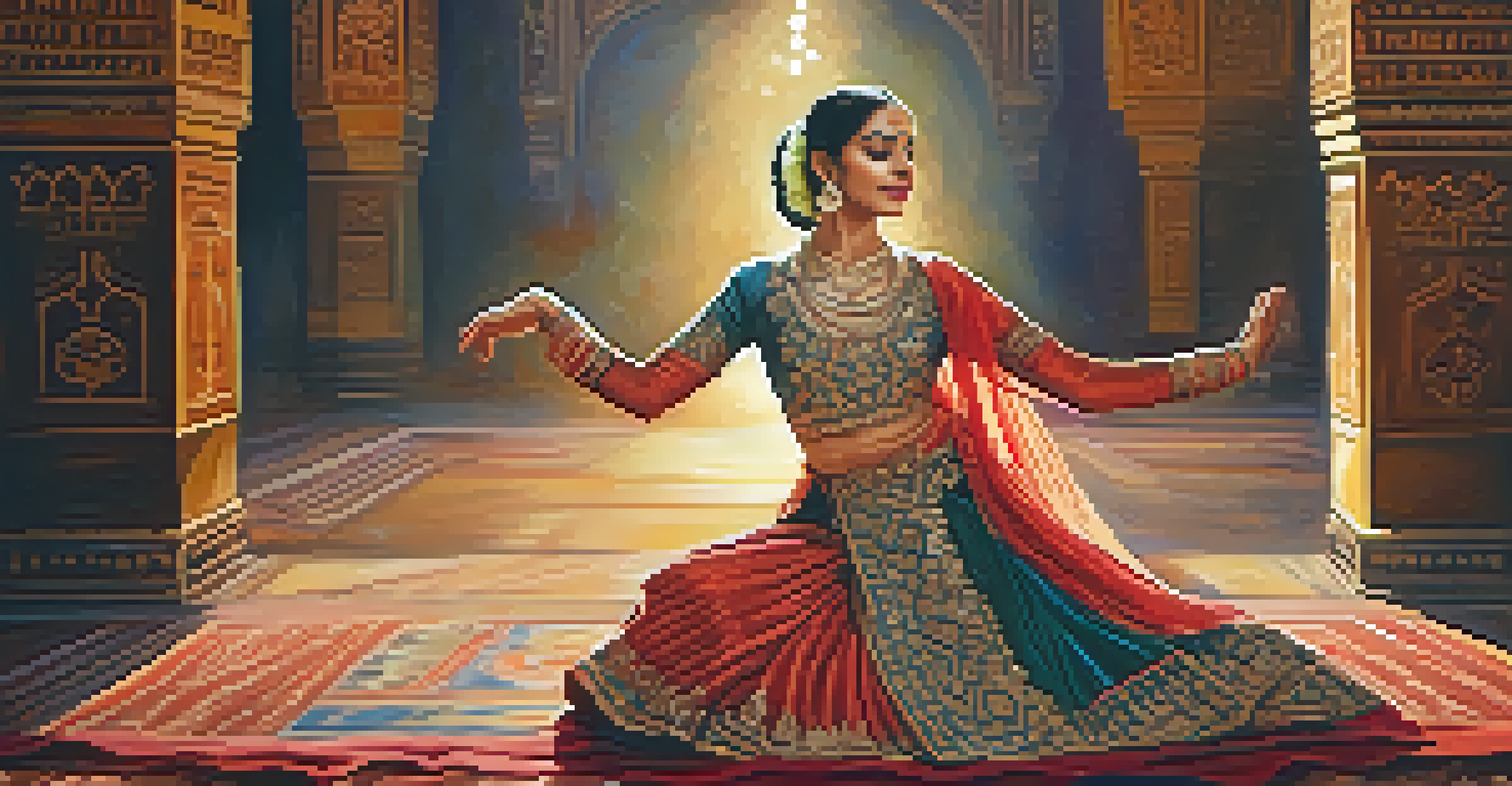Traditional Dances and Their Folklore Narratives Explained

The Significance of Dance in Cultural Heritage
Traditional dances play a vital role in expressing cultural identity. They often reflect the history, values, and beliefs of a community. For many, these dances serve as a living archive, telling stories passed down through generations.
Dance is the hidden language of the soul.
Each dance encapsulates unique elements, such as music, costumes, and choreography, that are deeply rooted in the folklore of its people. This connection to heritage helps preserve cultural narratives, allowing future generations to appreciate their roots.
Moreover, these dances foster community bonds, as they bring people together during celebrations and rituals. By participating in these dances, individuals contribute to the ongoing story of their culture.
The Dance of the Sugar Cane: A Caribbean Example
In the Caribbean, the 'Bélé' dance is a vibrant expression of joy and resilience. This dance originated from the African slaves who worked on sugar plantations, and it tells a poignant story of struggle and celebration.

The rhythmic movements of the dancers mimic the swaying of sugar cane, while the accompanying music played on traditional drums evokes a sense of community and togetherness. Each performance is a reminder of the region's history and cultural evolution.
Dance as Cultural Identity
Traditional dances serve as a living archive that expresses and preserves the cultural identity, values, and history of communities.
Through the Bélé, participants not only honor their ancestors but also pass on the legacy to younger generations, ensuring that the stories of hardship and triumph continue to thrive.
The Maori Haka: More Than Just a Dance
The Haka is a traditional war dance of the Maori people of New Zealand, characterized by vigorous movements and chanting. Though often associated with preparation for battle, it also serves various ceremonial purposes, celebrating significant events and honoring ancestors.
The dance is a poem of which each movement is a word.
At its core, the Haka embodies the values of strength, unity, and pride. Each performance tells a story, often rooted in tribal history or personal experiences, creating a powerful connection between the dancers and their heritage.
Today, the Haka is performed by sports teams, notably the New Zealand All Blacks, as a way to pay homage to its cultural significance while engaging with a global audience.
The Flamenco: A Spanish Dance with Deep Roots
Flamenco is a passionate dance form that originated in the Andalusian region of Spain, reflecting the rich tapestry of influences from various cultures, including Gypsy, Moorish, and Spanish traditions. Each performance is an emotional expression of love, sorrow, and joy, often telling a story of the dancer's life experiences.
The intricate footwork, hand clapping, and guitar music create a mesmerizing atmosphere that captivates audiences. Flamenco dancers embody the essence of their stories through their movements, making each performance unique.
Community Connection Through Dance
Participating in traditional dances fosters community bonds and creates a sense of belonging during celebrations and rituals.
With its roots deeply embedded in folklore, Flamenco has evolved over the years while still honoring its historical context, making it a vital part of Spanish cultural identity.
The Indian Kathak: Dance as Storytelling
Kathak is one of the eight classical dance forms of India, rooted in storytelling and spirituality. This dance form utilizes intricate footwork, expressive hand gestures, and facial expressions to convey narratives from Hindu mythology and folklore.
Performers often depict tales of love, betrayal, and devotion, drawing the audience into the emotional journey of the characters they portray. Each performance serves as a bridge connecting the ancient stories to contemporary audiences.
Through Kathak, dancers not only showcase their technical skill but also keep alive the cultural stories that have shaped Indian society for centuries.
The Irish Ceili: A Celebration of Community
Irish Ceili dances are lively social gatherings that often feature group dances, embodying a spirit of joy and camaraderie. Originating in rural Ireland, these dances typically celebrate community events, such as weddings and festivals, where everyone is invited to participate.
The dances are characterized by their energetic steps and lively music, often played on traditional instruments like fiddles and flutes. Each Ceili dance has its own unique steps, but the emphasis on community participation creates a sense of belonging.
Storytelling Through Dance Forms
Various dance forms, like Kathak and Flamenco, utilize movement and music to convey powerful narratives that connect audiences to cultural heritage.
As the world becomes more globalized, Ceili dances continue to flourish, reminding participants of their shared heritage and the importance of coming together to celebrate life.
The Russian Troika: Dance of the Horses
The Troika is a traditional Russian dance that mimics the graceful movements of a three-horse sled. This dance is often performed during winter festivals and celebrations, showcasing the beauty of Russian folklore and the importance of horses in rural life.
The choreography typically involves synchronized movements that reflect the energy and spirit of horses galloping through the snow. It is a celebration of Russian culture, emphasizing the connection between nature, tradition, and community.

Through the Troika, dancers honor their heritage while engaging audiences with the lively rhythm and storytelling that characterize this captivating performance.
Conclusion: The Legacy of Traditional Dances
Traditional dances are more than just forms of entertainment; they are living narratives that encapsulate the essence of a culture. As we explore these dances, we uncover the stories and values that have shaped communities around the world.
By participating in or witnessing these dances, we gain insight into the rich tapestry of human experience, fostering appreciation for diverse cultures. Each dance serves as a reminder of our shared humanity and the power of storytelling.
As we move forward, it is essential to preserve these traditions and pass them on to future generations, ensuring that the folklore narratives remain vibrant and relevant in a rapidly changing world.